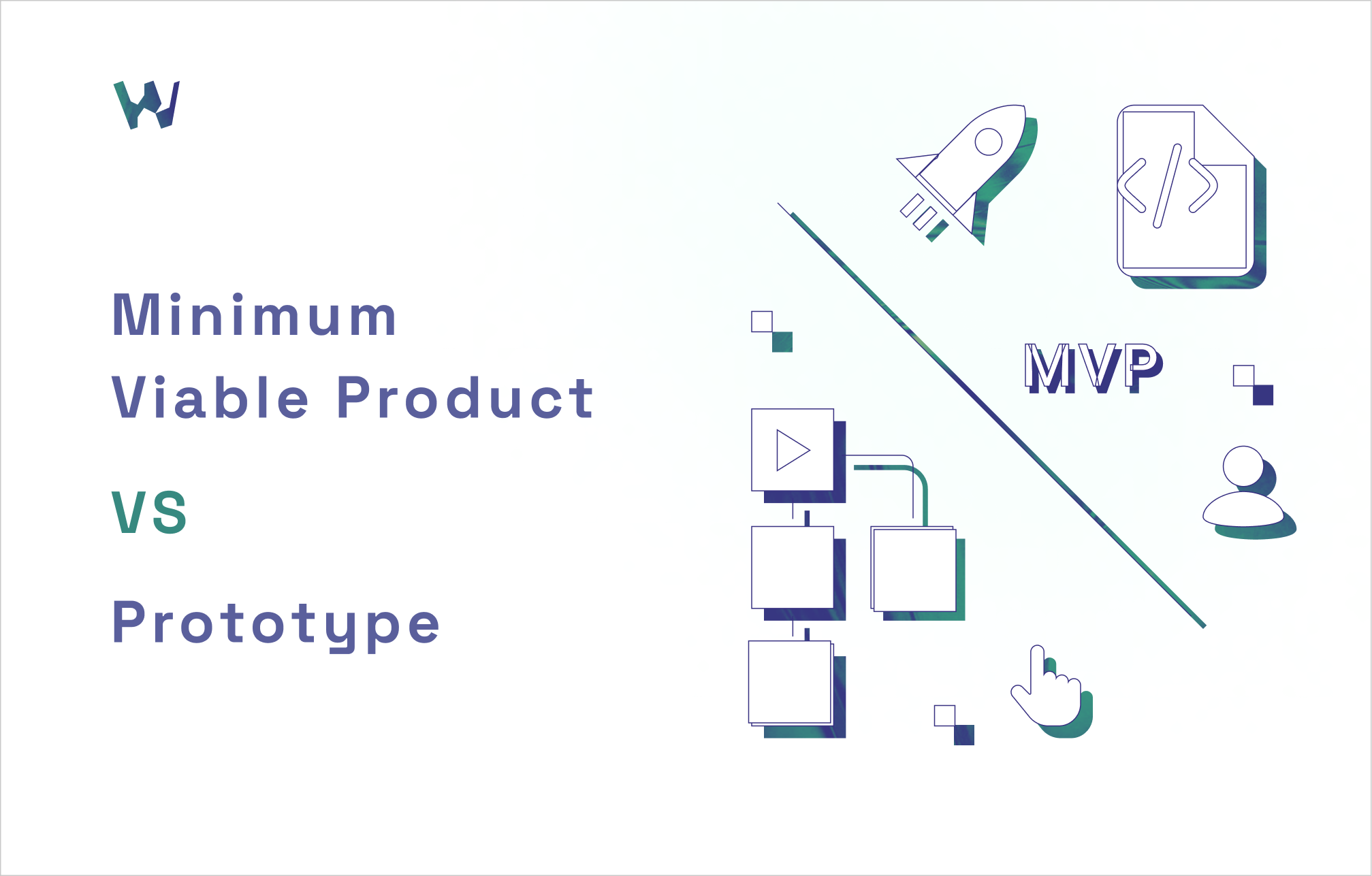Minimum Viable Product vs Prototype

When developing a new product or service, it's essential to validate ideas and gather feedback before investing significant time and resources.
Two commonly used approaches to achieve valuable feedback are the minimum viable product and the product prototype. While both techniques serve a similar purpose, they differ in their implementation and the stage of product development they target.
In this article, we will explore the distinctions between MVP vs prototype, their respective benefits, and how to make them more user-friendly.
What is MVP
A Minimum Viable Product is a version of a product that includes only the core features necessary to deliver value to potential users. The primary goal of an MVP is to validate assumptions and test the market demand without spending a lot of time and resources.
Minimum Viable Products usually offer functionality and a user experience that closely mirrors the final output, though some non-essential features may be missing.
Benefits of an MVP:
- Early feedback: By releasing an MVP to a select group of users, you can quickly gather feedback and validate your product idea. This enables you to make informed decisions about the product's viability and make necessary adjustments early on.
- Cost-effective: Building an MVP allows you to save time and resources by focusing on the essential features. It prevents unnecessary investments in features that may not resonate with users, reducing the risk of waste.
- Faster time to market: Launching an MVP enables you to enter the market sooner, gaining an advantage over competitors. This allows you to establish a user base, build brand loyalty, and generate revenue while continuing to refine and enhance your product.
If you’re into app development you’ve probably heard about Oversecurity — a platform that allows you to check applications for vulnerabilities before releasing them on app stores.
They started with MVP and after gathering positive feedback they decided to improve their design and enter the market.
What is Prototype
A prototype, on the other hand, is a preliminary model or representation of a product, often created using tools like wireframes, mockups, or even physical models.
Prototypes can vary in fidelity, ranging from low-fidelity (simple sketches or paper prototypes) to high-fidelity (interactive digital prototypes with detailed functionality). Prototypes are primarily used to test and validate design concepts, user interfaces, and user experiences.
Benefits of Prototypes:
- Design validation: Prototypes allow you to test and iterate on the product's design, allowing you to identify potential flaws or areas for improvement before investing in development.
User feedback gathered through prototype testing can help refine the final product's aesthetics, functionality, and usability.
- User-centered focus: By involving users in the prototype testing process, you can gain valuable insights into their expectations, preferences, and pain points.
This user-centered approach helps create a product that meets user needs and enhances the overall user experience.
- Communication and collaboration: Prototypes serve as a visual representation that aids communication and cooperation among team members, stakeholders, and developers.
They facilitate discussions, align expectations, and provide clarity, ensuring everyone is on the same page regarding the product's direction.
Making MVPs and Prototypes User-Friendly
1. Polish it up
Refine the user interface and overall visual design of your MVP or prototype to make it more visually appealing and engaging for users. Consider using friendly color schemes, intuitive navigation, and clear visual cues.
2. Simplify interactions
Streamline user interactions and make them intuitive and user-friendly. Use phrasal verbs like "sign up," "log in," or "check out" to make actions clear and easy to understand.
3. Incorporate user feedback
Actively listen to user feedback during the testing phase of your MVP or prototype and make necessary adjustments to improve the user experience. Implement changes that make the product more user-friendly and align with user expectations.
4. Provide helpful instructions
Include clear and concise instructions within the MVP or prototype to guide users and ensure they understand how to interact with the product. Use phrasal verbs such as "fill out," "select," or "submit" to indicate actions users need to take.
5. Conduct user testing
Invite users to test your MVP or prototype and observe their interactions. Analyze their behavior, gather feedback, and make iterative improvements to enhance user-friendliness.
Choosing the Right Approach
Choosing to develop a prototype vs MVP depends on the stage of your product development and the specific goals you want to achieve.
If you aim to validate your product idea and market demand, an MVP is a suitable choice. On the other hand, if you want to focus on refining the product's design and user experience, a prototype would be more appropriate.
In some cases, both approaches complement each other, with an MVP testing the viability of the product while a prototype refines its design based on user feedback.
Final words
Both Minimum Viable Products (MVPs) and prototypes are valuable tools in the product development process.
While MVPs allow you to validate assumptions, test the market, and prioritize features, prototypes enable you to refine the product's design, gather user feedback, and improve the overall user experience.
By incorporating user-friendly elements and actively involving users in the development process, you can create products that resonate with your target audience and increase the chances of success.
If you need help from experts with transforming your MVP or prototype into a full-fledged product — contact us!